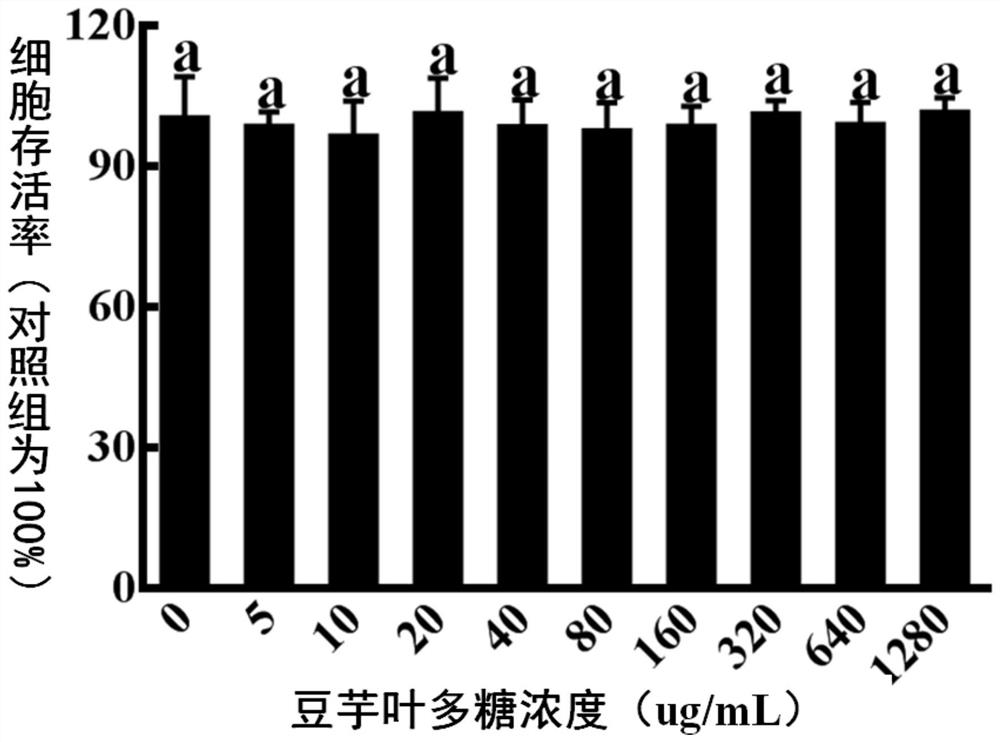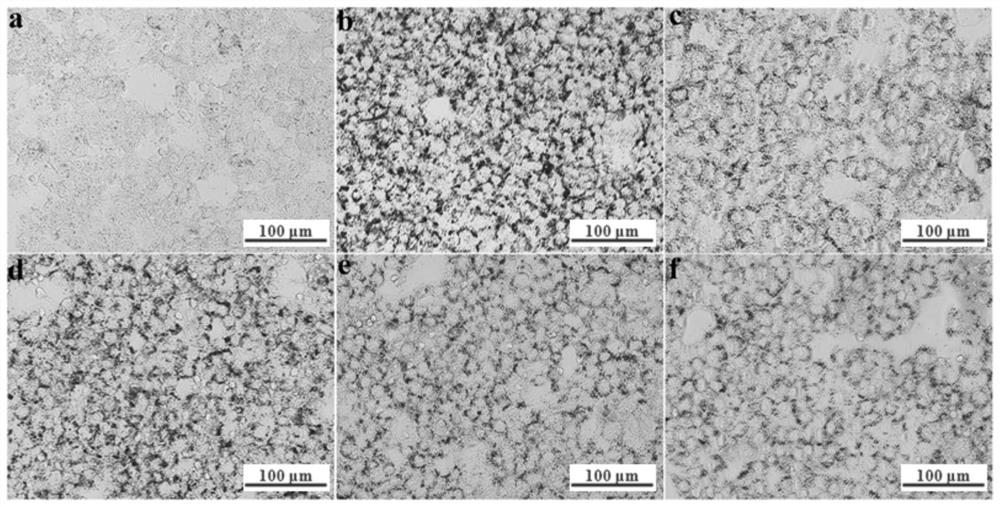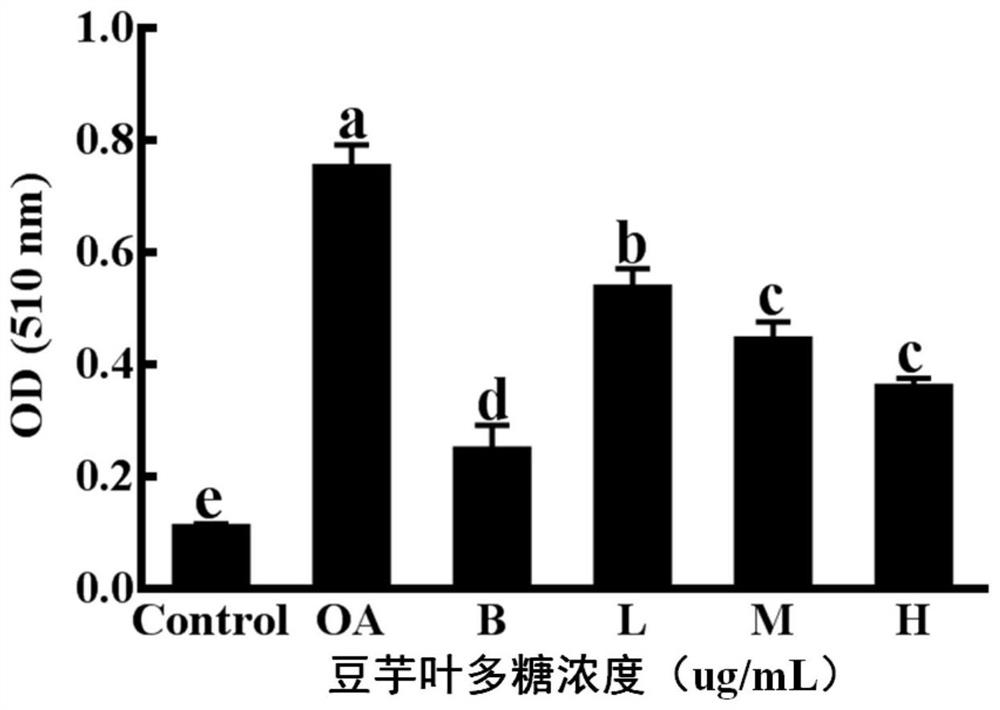The application of taro leaf polysaccharide in reducing lipid deposition in liver cells
A lipid deposition and hepatocyte technology, applied in the field of medicine, can solve the problems of reducing body immunity, easy to rebound, etc., achieves good development prospects, reduces cell lipid deposition, and expands the application field.
- Summary
- Abstract
- Description
- Claims
- Application Information
AI Technical Summary
Problems solved by technology
Method used
Image
Examples
Embodiment 1
[0064] Embodiment 1, a kind of preparation method of bean taro leaf polysaccharide, carries out following steps successively:
[0065] 1), the preparation of the crude product of bean taro leaf polysaccharide:
[0066] According to the solid-liquid ratio of 1g:10ml, weigh 100g of taro leaf and add 1000mL distilled water, extract in 80°C water bath for 4h (enzyme inactivation is also achieved during extraction), then beat, and then centrifuge (4000r / min for 30min), and Suction filter the supernatant obtained by centrifugation and collect the filtrate;
[0067] Replace the taro leaf with the filter residue obtained by centrifugation, repeat the above process of adding distilled water, then extracting (4h in 80°C water bath), beating, and centrifuging twice, and combine the filtrate obtained by centrifugation and suction for three times and concentrate to the original volume by rotary evaporation 1 / 5 of the concentrated solution.
[0068] Under stirring conditions, add ethanol ...
PUM
| Property | Measurement | Unit |
|---|---|---|
| molecular weight | aaaaa | aaaaa |
Abstract
Description
Claims
Application Information
 Login to View More
Login to View More - R&D
- Intellectual Property
- Life Sciences
- Materials
- Tech Scout
- Unparalleled Data Quality
- Higher Quality Content
- 60% Fewer Hallucinations
Browse by: Latest US Patents, China's latest patents, Technical Efficacy Thesaurus, Application Domain, Technology Topic, Popular Technical Reports.
© 2025 PatSnap. All rights reserved.Legal|Privacy policy|Modern Slavery Act Transparency Statement|Sitemap|About US| Contact US: help@patsnap.com



